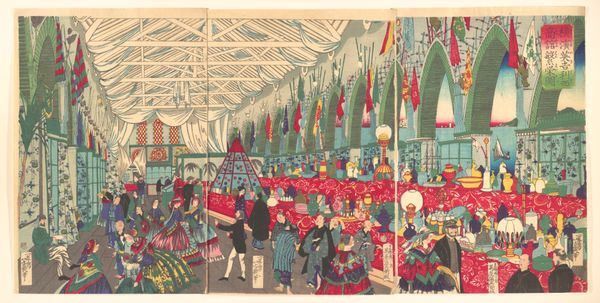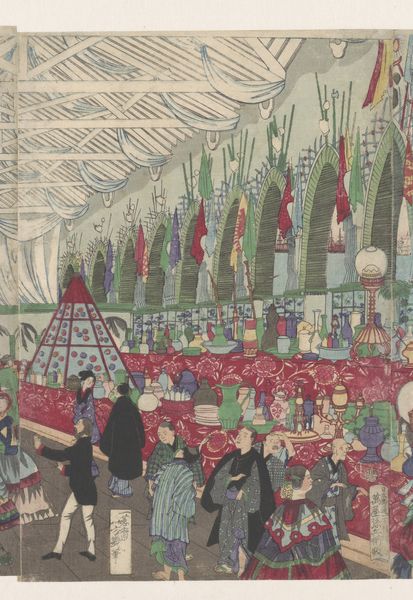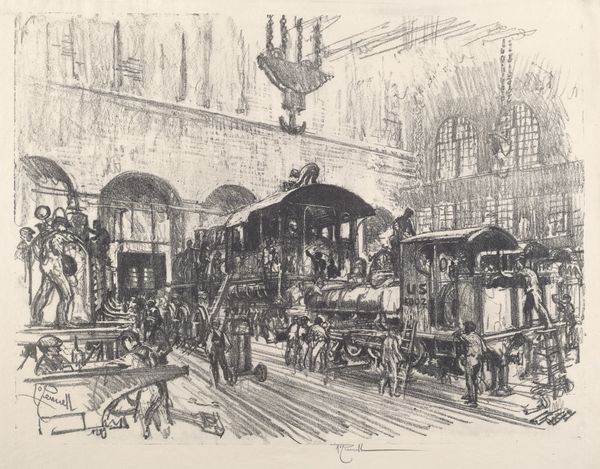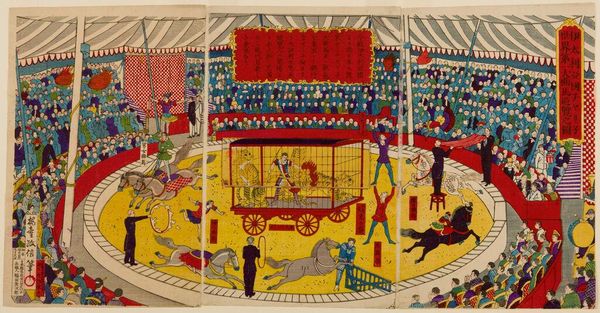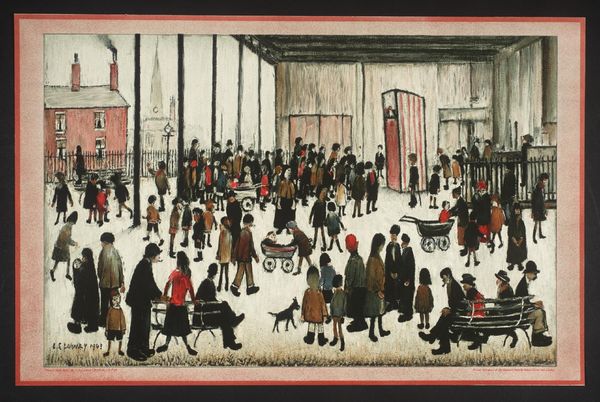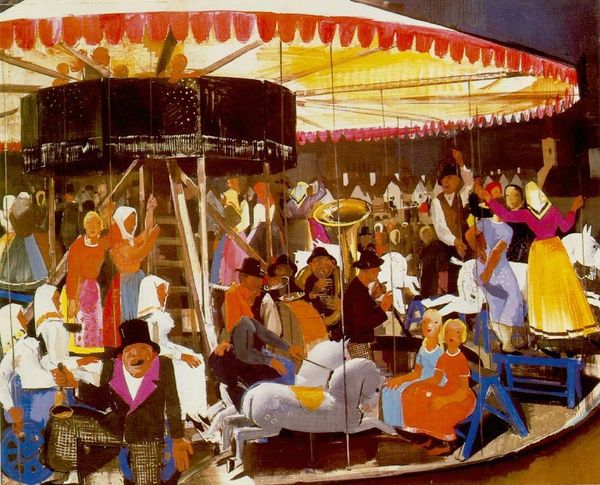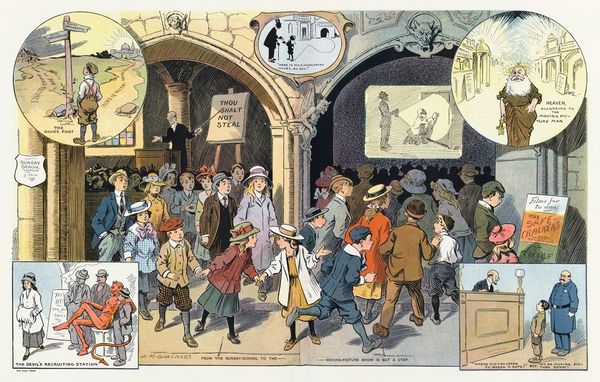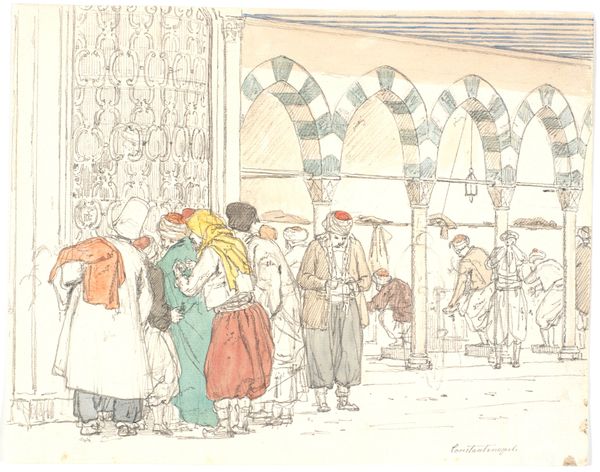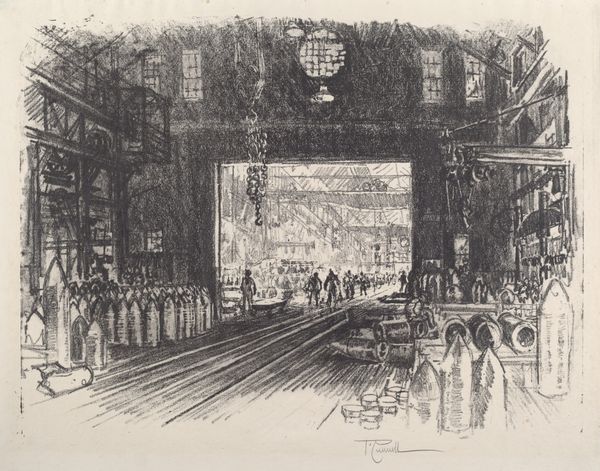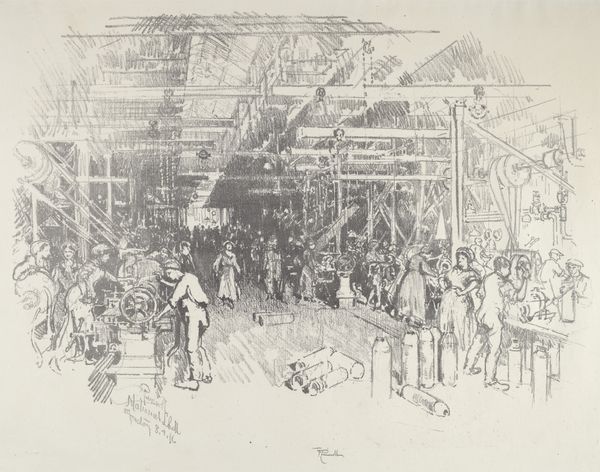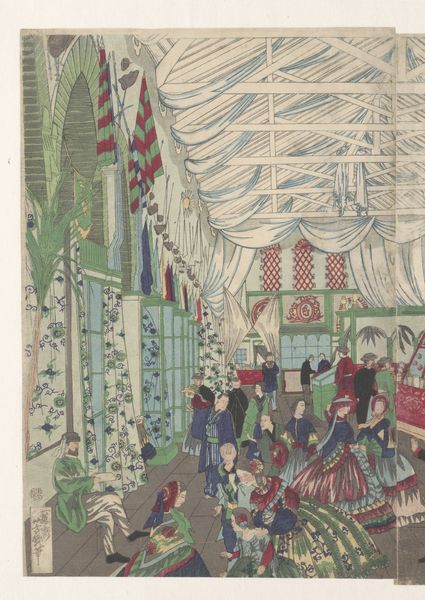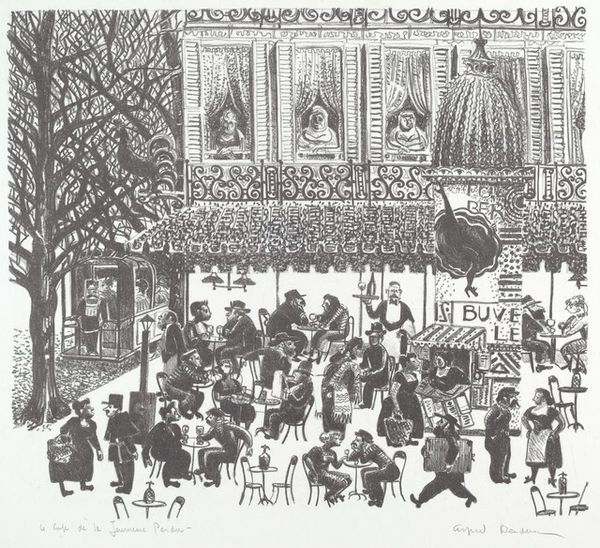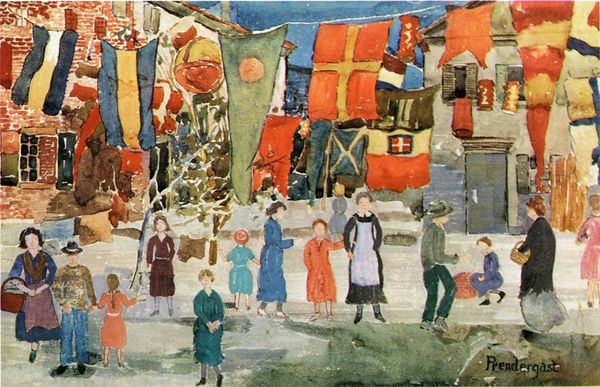
Picture of a Prosperous English Trading Firm in Yokohama 1871
0:00
0:00
Dimensions: 14 1/4 x 29 3/4 in. (36.2 x 75.6 cm)
Copyright: Public Domain
Curator: Editor: This colorful print, "Picture of a Prosperous English Trading Firm in Yokohama" by Utagawa Yoshiiku, dates to 1871. It's incredible how Yoshiiku captured the energy of the scene using what appears to be a woodblock technique. What really strikes me is the depiction of intercultural exchange. What's your perspective on this work? Curator: From a materialist standpoint, let's consider the woodblock print itself. It's not just an image, but a testament to the labor and the accessibility of art production during the Meiji period. This wasn’t a unique, elite artwork, but rather a mass-produced item, distributed and consumed within a rapidly changing society. The vibrant colors speak to the availability of new pigments, reflecting Japan's increasing trade and engagement with the West. Editor: So the materials and processes used have as much to say as the subject matter? How would you say this challenges traditional art historical interpretations? Curator: Absolutely. We're often trained to focus on the artistic genius of the individual, overlooking the collaborative workshops and the complex economic networks that enabled these works. Woodblock printing was a commercial enterprise. It depended on skilled artisans and a market hungry for images of modernity. Even the depiction of the English firm highlights the burgeoning consumer culture, suggesting a demand for foreign goods that impacted the local economy. The *means* of making this art reveal much more than the image *itself*. Editor: That's fascinating. It makes me consider the wood and paper used and what that implied at that time. So, what lasting thought do you have about the role of materials in appreciating this print? Curator: Considering the labor involved, from the artists and carvers to distributors, gives us a much richer, and perhaps more accurate understanding of how this print functioned within its time. It wasn’t just a piece of art; it was a commodity embedded in a complex web of production and consumption.
Comments
No comments
Be the first to comment and join the conversation on the ultimate creative platform.
